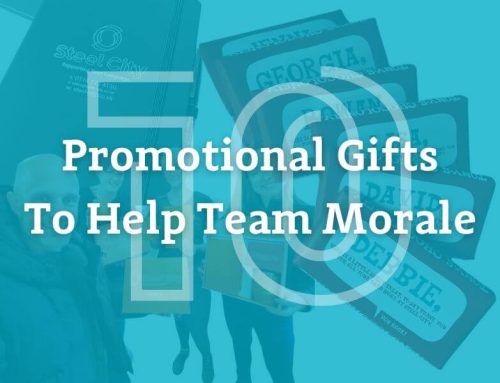
Connections and relationships are different things. Connections are easy – you can connect with almost anyone on the planet very quickly and easily via digital means, like Facebook, Instagram, or even email. But connections are not the same thing as relationships as they are not necessarily positive and are almost always less powerful. What you want to build for your business is a relationship with your clients and potential clients – and through that relationship comes loyalty, to and from those who buy from you. In the current culture of impatience and lack of consumer (or producer) loyalty, this can be a very valuable thing.
Why are relationships important?
Consider what happens when your website has an issue and crashes. A loyal customer will check back later and buy from you then. A connection will go somewhere else and buy from a competitor. What happens when a delivery goes wrong, through no fault of your own? A loyal customer will brush it off, knowing that you are usually very reliable. A connection will cancel the order and receive a refund, possibly even damaging your company’s reputation through negative reviews. The list goes on and on. Those companies that nurture customer relationships and loyalty tend to get it back in return, and that means more business.
So how do we form these relationships?
First of all, remember that you are dealing with people, not heartless digital accounts or names on a list. Relationship marketing emphasizes customer satisfaction over sales transactions. It is more about how happy the customer is, than how much money they spent. Long-term customers are seen as more valuable than many short-term customers might be. Relationship marketing aims away from being intrusive by working to make all contact something of interest to the receiver. People aren’t annoyed by emails that are interesting or beneficial – only by those that don’t pertain to them and feel more like a mass junk mail campaign.
The goal is to make the marketing efforts personal, applicable, and to gain loyalty and longevity of the relationship.
In relationship marketing, both the buyer and the seller are interested in a more satisfying experience.
Why Care About Relationship Marketing?
One of the costliest parts of a business can be gaining new customers. Especially in markets with limited-time usage, like baby products, a regular influx of new customers is essential. But even in such markets, a relationship can mean the difference between losing a client after an initial sale, and retaining the benefits of that contact, either through continued sales or referrals – which is basically a way to have satisfied customers do some of your marketing for you!
Benefits
One of the benefits of relationship marketing is a higher customer lifetime value (CLV). This means that the cost of gaining a customer is paid back over a long customer relationship, repeated purchases, and loyalty. This can mean that a higher initial cost of gaining that customer is worth it, because you retain them longer, rather than gaining a cheaper, one-off customer transaction that doesn’t last or repeat.
Another benefit is a reduction in the amount spent on marketing and advertising. Satisfied customers tell their friends and family about the product and so they do your marketing for you. Because the friends of your customers are more likely to want the same types of services and products, this is a highly effective form of direct marketing – and you don’t have to pay more for it!
Your focus can be more on a great customer experience, and let the great results of this offset your marketing costs.

Examples
Brands can use a variety of relationship marketing techniques.
One is to provide great customer service. Happy customers mean repeat business.
Branded merchandise can turn customers into loyal advocates of your brand, helping to amplify your message and improve awareness.
Another is to thank customers for their business, through a surprise gift card or a social media post.
Surveys and follow-up calls and emails (not too many though!) can be a great way to show customers that you care about their shopping experience too. Especially if you take action to improve things based on their feedback.
Loyalty programs that reward customers for repeat business are a great way to build relationships.
Referral bonuses and perks for word-of-mouth advertising are also effective.
Loyalty discounts and bonuses for members or long-term customers are a great way to impress customers and build both loyalty and word-of-mouth marketing.

History
The term ‘Relationship Marketing’ was first proposed by Berry (1983) and Jackson (1985), American marketing scholars. They proposed that the main goal of marketing went beyond gaining new customers, to building relationships and long-term habitual purchases from existing customers. They maintained that the cost of marketing of this type was far lower than that of traditional modern marketing goals focussed on new customers and maximum initial sales.
Jackson modified the theory to include industry marketing. He maintained that the core of relationship marketing was to establish and maintain close relationships with enterprise customers.
Since that initial introduction of the concept, studies have shown that the maintenance of existing customers is the most effective use of time and other resources, as it creates long-term interest in a given product.
It is important to note that some resources and interest must still be aimed at gaining new customers – because without them, there is no one to develop into long-term customers.
Six markets model
In 1991, Christopher, Payne and Ballantyne identified six markets that they claim to be key to relationship marketing. These include internal markets, supplier markets, recruitment markets, referral markets, influence markets and customer markets.
Supplier markets focus on relationships with key suppliers, recruitment markets focus on the recruitment of key employees and talent; referral marketing stimulates referrals from existing customers; influence markets include sub markets, such as government regulators, standards bodies, lobbyists, stockbrokers, consumer associations, bankers, venture capitalists, financial analysts, environmental associations and labour associations; and customer markets are reached through directly marketing to individual people or companies who fall within the target customer group.
Relationship marketers believe that each person in an organisation – not just the public relations department – is responsible for building relationships between all six markets and the company.







Leave A Comment